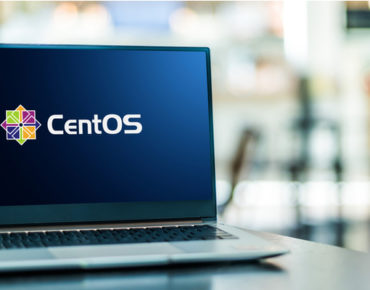AlmaLinux Progressing as a CentOS Linux Replacement, Now Available in Azure Marketplace

When Red Hat announced in December 2020 that it would no longer offer the open source CentOS Linux as a stable release and would instead only provide it as a rolling release with frequent changes under the name CentOS Stream, a disturbance was caused throughout the open source community.
Loud complaints and concerns quickly emanated from the CentOS user community, which within weeks inspired several open source community groups to begin planning alternatives that users would be able to pick up and use to transition from the now-doomed CentOS 8 stable release.
Among the CentOS alternatives to sprout up was a project that was originally code-named Lenix from CloudLinux, which offers a paid Red Hat Enterprise Linux 8 (RHEL 8)/CentOS clone that is built for hosting providers.
Other alternatives included Rocky Linux, which arrived in June. The Rocky Linux development effort – named as a tribute to late CentOS co-founder Rocky McGaugh – was started by Gregory M. Kurtzer, the co-creator of the original CentOS distro, and the inventor of Singularity and Warewulf.
By mid-January, the Lenix project was renamed and given a focused direction, turning it into AlmaLinux, a 1:1 binary compatible fork of RHEL that is CentOS compatible, free to use and built on open source, just like CentOS. The first code for the project started as a RHEL fork in December and it was released as a first official AlmaLinux version on March 30, a week after Red Hat released its stable version of RHEL 8.
 In its latest move forward, AlmaLinux announced this week that the operating system is now available on Azure Marketplace, giving it more credibility with CentOS Linux users who must pivot away from CentOS by Dec. 31, 2021. That is the deadline date for when it will be transitioned to CentOS Stream and dropped as a stable release.
In its latest move forward, AlmaLinux announced this week that the operating system is now available on Azure Marketplace, giving it more credibility with CentOS Linux users who must pivot away from CentOS by Dec. 31, 2021. That is the deadline date for when it will be transitioned to CentOS Stream and dropped as a stable release.
AlmaLinux OS is a 100 percent, community-owned and governed, open source and forever-free, enterprise-grade Linux distribution based on RHEL,” the Marketplace listing states. “Focused on long-term stability and providing a robust platform, AlmaLinux is 1:1 binary compatible with RHEL. Users and developers count on AlmaLinux as the platform to power all their workloads in the cloud and beyond.”
Users can check out the AlmaLinux development efforts at almalinux.org and join the community at the AlmaLinux Community Chat.
The Azure Marketplace version of the operating system provides an Azure image optimized for x86 64-bit machines that is suitable for all use cases, workloads and for anyone looking to use an alternative to CentOS and/or RHEL, according to the group.
AlmaLinux is a fully-community-owned Linux distribution, featuring a governing board made up of open source community members who will work to ensure that the OS does not eventually meet the fate of CentOS under Red Hat, Jack Aboutboul, the AlmaLinux community manager, told EnterpriseAI.
“We set up the AlmaLinux OS Foundation, which is a 501(c)(6) non-profit, which is basically the steward of the intellectual property, the copyrights, all that type of stuff,” said Aboutboul. “The reason that we decided to do that was because we do not want this to be owned by any individual party, not by CloudLinux, not by anyone else.”
Because that was never done with CentOS under Red Hat, that is what enabled the situation where CentOS was given a new direction without the community’s input, he said.
“They were able to do that because the project was never really non-profit. There was never a separate entity that was responsible for it. It just kind of changed in over the years right between different people,” said Aboutboul.
Bill Weinberg, an open source strategist and principal analyst with Linux Pundit, said the addition of AlmaLinux to the Azure Marketplace is “representative of the Microsoft Azure hosting strategy that focuses on real-world workload vs. just distributions or applications.”
When Microsoft was readying Azure for its original launch, the company consulted with the team Weinberg was working with at that time at Black Duck Software, an open source management vendor, he said. Weinberg and the team were tasked with determining which Linux distros and apps were key to a successful entry into open source workload hosting, “and CentOS was on our list of de rigueur packages and platforms,” he said.
The speedy work by the AlmaLinux community in readying the OS for users in only a few months is remarkable, said Weinberg.
“The rapid progress in delivering AlmaLinux is a tribute to multiple factors: the stability and ubiquitous of RHEL and CentOS, the strong demand for a stable CentOS replacement, and the agility of the AlmaLinux dev team and community,” he said. “The Azure Marketplace has the right profile for supply of AlmaLinux, targeting SMB organizations who need RHEL interoperability without the strings and costs associated with a Red Hat Service Level Agreement. Having a stable RHEL equivalent – versus a forward-looking rolling distro – is also important to supporting larger cloud deployments for enterprise and for cloud-hosted services providers who need to scale up and out at will with predictable stack compatibility and performance.”
Another analyst, Greg Macatee of IDC, said the Azure Marketplace inclusion for AlmaLinux is notable. “It is a partnership that is beneficial for all parties, particularly for AlmaLinux as it continues to gain recognition and traction from end users as well as for end users themselves who now have the option to deploy their Azure workloads on open source AlmaLinux images,” he said. “The AlmaLinux Foundation will maintain and support the operating system on Azure while continuing to supply updates as part of the collaboration, making it a viable option in the cloud for new users or those migrating from CentOS.”
As part of the AlmaLinux project, CloudLinux has stated that it is committed to supporting the fledging distribution until at least 2029 and that it will invest at least $1 million annually into its development.
Paid commercial technical support for enterprises and other business customers using AlmaLinux is offered through TuxCare, which is a division of CloudLinux.
The need for CentOS alternatives began last Dec. 8 when Red Hat announced that CentOS would no longer include a stable version with a long, steady future that was relied upon by a broad range of users, from data centers to corporate and business users and more, this is a potentially major blow. For those users the upcoming CentOS Stream rolling release with frequent updates that essentially turn it into a beta OS, is no longer suitable for reliable production workloads.
Previously, the latest CentOS 8 version had been expected to have support through 2029.
Founded in 2004, CentOS – which stands for Community Enterprise Linux Operating System – was based on Red Hat Linux 2.1 code before Red Hat Linux evolved and was aimed directly at businesses and became RHEL.
When Red Hat announced the coming changes back in December it said the move to CentOS Stream “represents the best way to further drive Linux innovation,” while giving open source developers, hardware and software creators, individual contributors and systems administrators “a closer connection to the development of the world’s leading enterprise Linux platform.”
So far, AlmaLinux has had about 100,000 downloads on the project’s mirrors, which does not include downloads from some 139 other mirrors that are not tracked by the project, said Aboutboul.
Aboutboul previously worked for Red Hat and was a member of the company’s Fedora community for some 20 years, he said.
That made it even more shocking to him when Red Hat announced that it was changing CentOS for the user community, he added.
“That announcement was not the Red Hat I know and which I worked for and loved for a long time,” he said. “It was kind of weird to me that that happened to begin with. And it poked me very strongly to want to do something about it. That is how I ended up doing this.”












